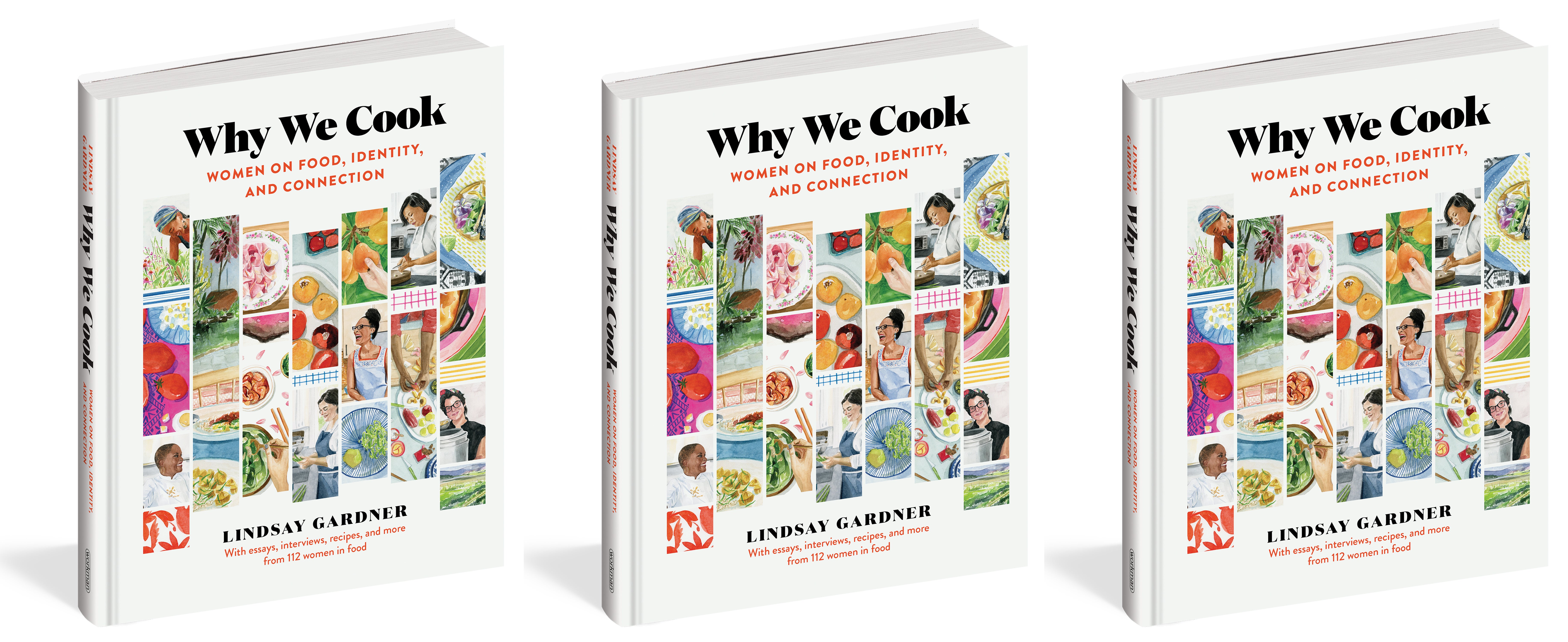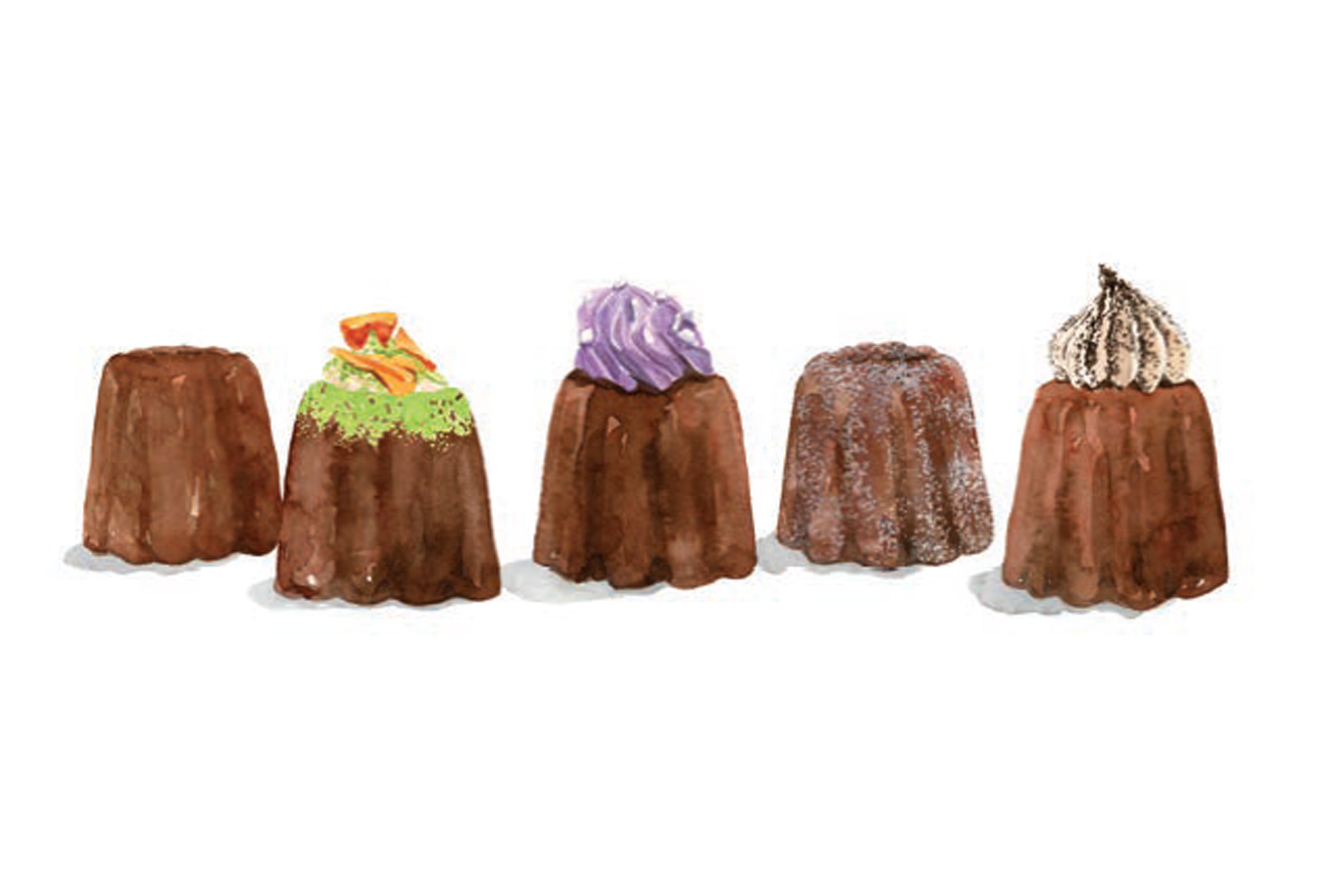100 women restauranteurs, activists and professional chefs on why we cook
According to a new cookbook celebrating the women dedicated to changing the world of food, it’s about a lot more than nutrition, writes Ella Walker

The world of food can be a fraught place of discrimination, bad pay and uncomfortable working hours and environments, but it is also a place of vision, incredible creativity, joy and, of course, dinner.
Author and illustrator Lindsay Gardner’s new book, Why We Cook, takes these ideas and contradictions and asks female chefs, cooks and food writers for their thoughts and feelings around the time they spend in the kitchen.
Here’s what you need to know/
The book:Why We Cook: Women On Food, Identity And Connection by Lindsay Gardner.
Who will love it? Not just women, that’s for sure. If you’re connected to or intrigued by the food industry and its quirks and problems, or are a sucker for a good food story and spend many a daydream recalling your own top meals of all time, you will find a nook to enjoy in this book.
Gardner calls Why We Cook “a celebration of women’s culinary contributions, achievements, and stories” (and notes that “woman” refers to anyone who identifies as a woman), making it an inclusive read for all.
What is it trying to get us cooking? Interspersed with essays, memories, chef interviews and pie charts, you will find illustrated recipes from individual chefs, the only link between them being the fact they are important to the creator.
There’s sage buffalo meatballs with sweet potato puree, a citrus almond polenta cake, grilled wild salmon tacos and cabbage and wild mushroom pancake – but the focus is less on the specifics, and more on thinking about how we all relate to food, and what we enjoy cooking and why. The recipes are an added bonus.
How easy is it to use? If you’re expecting a straightforward cookbook, this is not it. You’re more likely to find yourself reading it, dipping in and out of the interviews, answering the “favourite ingredients” and “treasured kitchen items” sections and considering conversation starters (like “What do you think of as comforting or healing food?”) while eating your dinner, rather than ahead of making it.
That said, the recipes themselves, once you’ve landed on them, are mostly manageable (start with the buttermilk and butter lettuce salad and work your way up) and easy to follow. However, you may find it frustrating at times, when a specific dish is mentioned, but no recipe is supplied alongside.
The best recipe is… Mimi Mendoza’s Canelés de Bordeaux (below). These crunchy, crispy, gooey pastries are ridiculously delicious.
The recipe we’re most likely to post on Instagram is… Mutsuko Soma’s soba noodles. Handmade noodles are just so mesmeric and therapeutic to work with.
The dish we’re least likely to try is… those sage buffalo meatballs – buffalo is hard to get round these parts. Beef might have to sub in.
Overall rating: 7/10 – beautifully illustrated by Gardner, Why We Cook is thoughtful, quizzical and informative. And while the names featured are largely unknown to UK and Irish audiences, it will introduce you to a raft of talented food writers and chefs worth knowing about.

How to make Mimi Mendoza’s Canelés de Bordeaux
“When I was a young pastry cook in a French bistro, I worked for a short, scruffy pastry chef named Brian. He seemed to be angry all the time, but for some reason, he invested in me. So, whenever he expressed any sort of interest in something I made, I would get excited because it meant this ‘thing’ would be amazing,” remembers chef Mendoza.
“One time around, it was a small, unassuming pastry called canelé de Bordeaux. Years later, I became the pastry chef at a restaurant where he had previously worked. I started practising my canelé recipe there and it brought back so many good memories of learning from chef Brian. To this day, I don’t bake a single batch without thinking about him.”
Note: plan to make the batter at least 24 hours and preferably 48 hours in advance. The batter works best when it is allowed to sit overnight and mature.
Ingredients:
(Makes 12 canelés)
- 10oz all-purpose flour
- 1lb plus 9oz icing sugar
- 2tsp fleur de sel (a type of sea salt)
- 3 large eggs plus 1 large egg yolk
- 1½ quarts whole milk (around 1.4l)
- 5oz browned butter, strained
- 6oz Myers’s rum
- 2 Tahitian vanilla beans
- ½ tonka bean (very powerful flavour)
- 8oz clarified butter
- 8oz pure beeswax
Method:
1. Sift the flour and confectioners’ sugar together in a large bowl, then add the fleur de sel. In a separate bowl, whisk the whole eggs and the egg yolk together.
2. Place the milk, browned butter, rum, vanilla beans, and tonka bean in a small pot and bring just to a boil over medium-high heat. Turn off the heat and ladle the liquid slowly into the egg mixture until homogenous. Using a whisk, slowly add the wet ingredients to the dry ingredients. Whisk just to incorporate – do not add air to the mixture! Allow the cooled mixture to sit in an airtight container in the fridge for a minimum of 24 hours before baking.
3. When ready to bake, preheat the oven to 400F/200C. Combine the clarified butter and beeswax in a small pot and heat over high until the mixture is completely melted. The mixture is extremely hot – proceed with caution. Line 12 copper canelé moulds (two and a half inches in diameter) with the butter mixture. Fill each mould with batter until it’s a quarter of an inch from the rim. Bake for 40 to 45 minutes, until the edges are evenly and deeply browned, and butter is no longer pooled in the center.
4. Place a cooling rack on top of a foil-lined baking sheet. Remove the canelés from the moulds and place them on the rack to allow excess butter and beeswax to drip off. (The canelés will be soft when they first come out of the oven, but once they have cooled, the outer crusts will be crisp and hard.) Serve at room temperature within eight hours of baking, to ensure the exterior crusts are enjoyed when crispy and crunchy.
‘Why We Cook: Women On Food, Identity, And Connection’ by Lindsay Gardner. Art by Lindsay Gardner. Recipe by Mimi Mendoza. Published by Workman Publishing, New York, priced £18.99. Available now.
